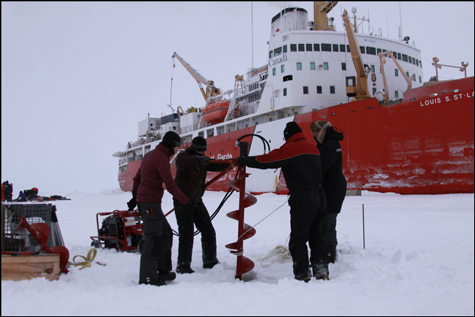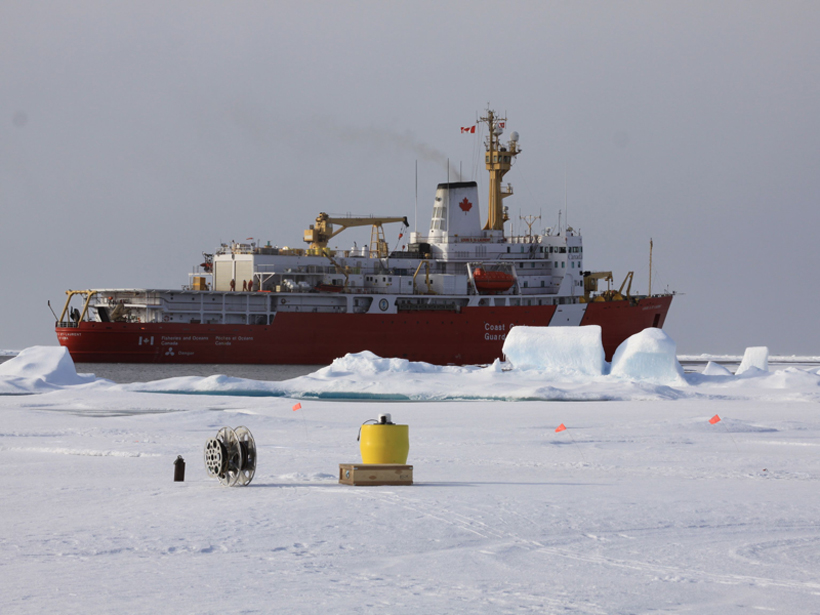Source: Journal of Geophysical Research: Oceans
Climate change is rapidly transforming the world’s oceans, and researchers are scrambling to understand what that means for the physical and biogeochemical processes that govern ocean systems around the world. Scientists have measured dissolved carbon dioxide (CO2) gas dynamics in many ocean regions to predict future CO2 exchange between the air and sea, which will influence ocean acidification and global warming. Nonetheless, such data are sorely lacking for remote polar regions, where sea ice hinders ship access.

To help fill the polar data gap, Islam et al. investigated gas exchange in the waters of the Arctic Ocean’s vast Canada Basin. In August 2012, they deployed ice-tethered profilers in two regions, one with a dense cover of sea ice and another with only sparse ice. Each profiler included a bundle of sensor instruments suspended about 6 meters deep in the water and tethered to the ice floating above.
For almost 50 days, the sensors measured carbon dioxide and oxygen levels, temperature, salinity, and chlorophyll a fluorescence, which helps reveal biological production. The sites were 222 kilometers apart, on average, and as the sea ice drifted, the tethered sensors did too.
The team previously published their gas measurements in May 2016, reporting that carbon dioxide levels at both sites were below atmospheric saturation during the study period, whereas dissolved oxygen was slightly supersaturated. In the new study, the scientists compared the two sites to examine how ice cover influenced observed variability in oxygen and carbon dioxide levels. They used computational modeling to analyze sensor data in the context of concurrent oceanic and atmospheric conditions.
The results suggested that in the region with sparse ice cover, biological production, gas exchange with the atmosphere, and mixing between different layers of seawater all influenced oxygen and carbon dioxide variability. In the ice-dense region, mixing played a dominant role in gas variability, and biological production and gas exchange provided a negligible contribution.
These findings could help improve understanding of gas exchange in the Arctic Ocean. Arctic sea ice is declining rapidly, and some researchers predict that fresh meltwater will inhibit nutrient transport and limit biological activity, allowing the surface ocean to come into equilibrium with atmospheric CO2 and promoting acidification. The authors say that continued CO2 monitoring in the Canada Basin is necessary to better understand current trends and future possibilities. (Journal of Geophysical Research: Oceans, https://doi.org/10.1002/2016JC012162, 2017)
—Sarah Stanley, Freelance Writer
Citation:
Stanley, S. (2017), How Arctic ice affects gas exchange between air and sea, Eos, 98, https://doi.org/10.1029/2017EO071153. Published on 14 April 2017.
Text © 2017. The authors. CC BY-NC-ND 3.0
Except where otherwise noted, images are subject to copyright. Any reuse without express permission from the copyright owner is prohibited.

